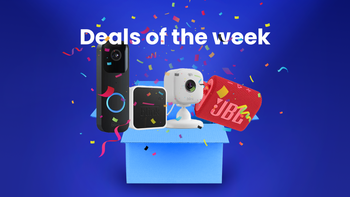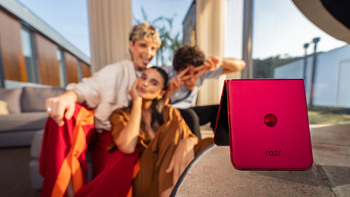Galaxy killer: Pixel 7a is the best Android phone you shouldn’t buy - 10 reasons to choose Pixel 7
This article may contain personal views and opinion from the author.
We may earn a commission if you make a purchase from the links on this page.

Pixel 7a… I haven’t been as confused about a new phone since every OnePlus flagship in the past three years.
The company is still trying to figure out what’s the best way to make phones, what’s the best way to sell them, position them, etc. - all those things that phone-makers with more experience have already gone through. And part of the course for Google is to simply keep making phones, which is why the Pixel 7a exists.
As someone who believes most people don’t need to spend more than $500-700 for a new phone, you’d think I’d recommend the Pixel 7a without batting an eye, and I was about to do that right until… today.
Now, I think you should actually skip the amazing Pixel 7a. Let’s see why…
Pixel 7a camera proves how inconsistent Google is; Pixel 7a finally fixes the broken Portrait Mode of the Pixel 7 but falls behind in video quality
Right! Let’s get the camera talk out of the way as that’s what most people care about anyway… I’ll try to keep this one short and clear.
So, Google finally dropped the trusty but ancient 12MP Sony IMX363 sensor that’s been in phones like the Pixel 2 and Pixel 6a in favor of the much newer 64MP Sony IMX767, which is larger in resolution but more importantly in sensor size. The rest of the cameras onboard are also new, a 13MP ultra-wide and a 13MP selfie shooter.
- Luckily, Pixel 7a finally seems to fix the oversharpened, overprocessed Portrait Mode photos, which Google introduced with Pixel 6 and Pixel 7; I don’t think this upgrade has anything to do with the new Sony sensor in the Pixel 7a (as opposed to the Samsung one in the Pixel 7) but the it’s there, it’s obvious, and it’s amazing (because it was well overdue)
- Then you look at zoom photos (whether it’s at 2x, 4x, or 8x zoom), and things start to change; you see that Google has seemingly dropped the magical sensor-cropping zoom of the Pixel 7 here, as zoom photos from the Pixel 7a look exactly like digitally-zoomed images from any other camera - in other words, very soft; on the bright side, they aren’t oversharpened - you could say the zoom in Pixel 7a is “naturally bad”
- Then you look at the ultra-wide-angle camera, and Pixel 7a has a noticeably wider FoV compared to Pixel 7, which lets you get more in the shot - a point for the Pixel 7a for flexibility; they seem to trade blows in terms of image quality but I’ll leave the more elaborate evaluation for our detailed camera comparisons and Pixel 7a review
- But then things flip around (again); what’s not really up for debate is video quality where the Pixel 7’s noise reduction algorithm seems to be dominating the new Pixel 7a, which doesn’t even try to reduce the noise; given the lack of noise reduction and the smaller image sensor, the Pixel 7a’s low-light videos look fitting for the $500 price, to say the least; for some weird reason, the Pixel 7a’s video stabilizaiton also seems noticeably weaker than that of the Pixel 7
As you can see, based on my early impressions, Google is being rather inconsistent when it comes to its cameras. The company chose to go with a new Sony sensor for the primary camera of the Pixel 7a as opposed to the Samsung GN1 from Pixel 7, and the result is different image quality strengths and weaknesses. In other words, the Pixel 7a and Pixel 7’s cameras can be good/bad in different, unique ways.
With past Pixel phones, Google used to optimize its algorithm for Sony's IMX363 while the company was using Qualcomm’s Snapdragon processors. Now, Google has to focus on optimizing Samsung’s GN1 camera in conjunction with the Samsung-made Tensor chip in the last two generations of Pixel phones. And here comes the Pixel 7a, which combines the Tensor chip with a primary camera sensor made by Sony. Could this be the reason why Google isn’t able to apply the Pixel 7’s zoom and video magic to the Pixel 7a? Or is the difference in image quality intentional? You tell me…
Of course, our Pixel 7a review and camera comparisons with the Pixel 7 and Pixel 6a will shed more light on the differences between the cameras, so stay tuned. Spoiler: The Pixel 7a’s camera seems to be a big upgrade over the Pixel 6a, which is great to see.
Don’t fool yourself! Pixel 7a isn’t a better phone than the Pixel 7: Here are 10 great reasons to buy Pixel 7 instead of the new Pixel 7a
The truth of the matter is that the Pixel 7 was released all the way back in October 2022, meaning the phone is constantly on sale. Offers from places like Amazon and BestBuy mean the vanilla Pixel 7 and Pixel 7a are priced more or less the same (around $500), and if the price for the two is identical (or even some $50 higher for the Pixel 7), I think the only logical decision is to buy the flagship model over the mid-ranger.
Premium design, better video quality, more storage, Reverse Wireless Charging: 10 ways Pixel 7 is better than Pixel 7a
- While the displays on the Pixel 7 and Pixel 7a seem mostly identical (OLED, HDR, 90Hz panels), the Pixel 7 has a slightly larger 6.3-inch screen, which many people nowadays tend to prefer; the other (bigger) difference between the two comes when you look at the display borders, which makes Pixel 7 look like the far more premium phone - the difference in bezel size also makes the two very similar in size despite the larger display in Pixel 7, which itself makes the “more compact phone” argument for the Pixel 7 relatively weak here
- Pixel 7 has a glass back vs plastic on the Pixel 7a, which means you get a more premium build with the flagship; then again, this could be an advantage for the 7a if you were to drop your phone without a case
- Pixel 7 uses the newer and supposedly stronger Gorilla Glass Vicus front (and back), while the Pixel 7a uses Gorilla Glass 3; I’d definitely still get a screen protector for both but the glass on Pixel 7 is supposed to be “stronger”
- Pixel 7 comes with IP68 dust and water-resistance versus IP67 protection on Pixel 7a; this means the former could technically be submerged 1.5m deep under water as opposed to “only” 1m with Pixel 7a - again, a very “technical” difference, which I can’t guarantee translates into the real world
- If you care about 60fps videos (those are usually smoother and allow for more flexible editing), Pixel 7 is the only one that can record 4K 60fps videos with all of its cameras, while the Pixel 7a tops up a 4K 30fps with the rear ultra-wide and selfie shooters (it can do 4K 60fps with the primary camera)
- For what it’s worth, the Pixel 7 is build with higher attention to detail; you realized that’s the case when you look at the metal camera housing on the back of the phone - this one blends seamlessly into the metal frame of the Pixel 7, which is not the case on the Pixel 7a
- While both the Pixel 7 and Pixel 7a will charge to 100% in about two hours, the Pixel 7’s faster 20W wired charging will top up the vanilla model slightly faster in the first half of the charging process; you can get close to 50% charge with Pixel 7 for 30 minutes of charging, while this figure will be closer to 40% on the Pixel 7a)
- Both phones support wireless charging (20W on Pixel 7 and 18W on Pixel 7a), and both are quite slow in that regard, but only the Pixel 7 supports Reverse Wireless Charging, which means you can charge your wireless earbuds on the back of the phone - something you won’t be able to do on Pixel 7a (that’s a real selling point for me as I often forget to charge my earbuds)
- As already mentioned in the camera section, the Pixel 7 seems to take far cleaner and noticeably less shaky videos than Pixel 7a, which is likely due to the lack of camera sensor optimization in the Pixel 7a; this seems to be especially true for mid-low light scenarios
- For an extra $50, Pixel 7 is the only one that offers a 256GB storage option, in case you take lots of pictures and videos and want to keep the phone for longer; the only storage option you get with the Pixel 7a is 128GB, which might not be enough for some
Of course, the value proposition will depend on the deal you can get. In some instances and for some people, getting a Pixel 7a might be cheaper. I’d say if the difference is $100, then it’s totally up to you whether the advantages the Pixel 7 has over the 7a are enough to make you pay up. But if the price is identical (which is the case right now), I’d pick the Pixel 7 over the Pixel 7a without much hesitation. It’s like getting a free upgrade for the same price, isn’t it?
Pixel 7a: Galaxy A54 and iPhone SE killer is too similar to Pixel 7 to justify its existence, yet too different to be considered “the best-value Android”; is it the last A-series Pixel?
Finally, the seemingly confusing Pixel 7a, which probably didn’t need to exist in the first place, helped me come to a realization! Pixel 7a helped me realize the vanilla Pixel 7 already is and always was Google and Android’s “flagship-killer”, “value champ”, or whatever you want to call it.
You rarely see an underpriced as opposed to an overpriced phone (plenty of them out there) but the Pixel 7 brings value that you can’t find anywhere else, and comparing it to the “cheaper” Pixel 7a makes that clearer than ever.
Frankly, this story made me think about the future of the Google Pixel lineup and whether the “A” series mid-range Pixel has a place there at all. You could argue Google can simply drop the price of the vanilla Pixel model six months after launch instead of having to make a very similar (new) phone to sell at a very similar price. Right?
My educated guess is that Google will simply have to make the upcoming Pixel 8 more expensive. Given that the Pixel 7a costs $50 more than the Pixel 6a, I’d expect the Pixel 8 to start at $650, which would still make it far cheaper than Samsung and Apple’s flagships. As for the future of the Pixel A-series, I could see Google making a $500 Pixel 8a but then we’d be in the same situation as now, wouldn’t we?
In the end, Google underpriced the Pixel 6 and Pixel 7, and now the company will have to slowly “fix” that very intentional “mistake”. As for the Pixel 7a… It’s a great phone that didn’t really need to exist. It’ll make for some amazing deals on eBay in a couple of months time. That’s when I would consider buying one. $500? Give me a Pixel 7 instead. $300? Take my money.










Things that are NOT allowed: